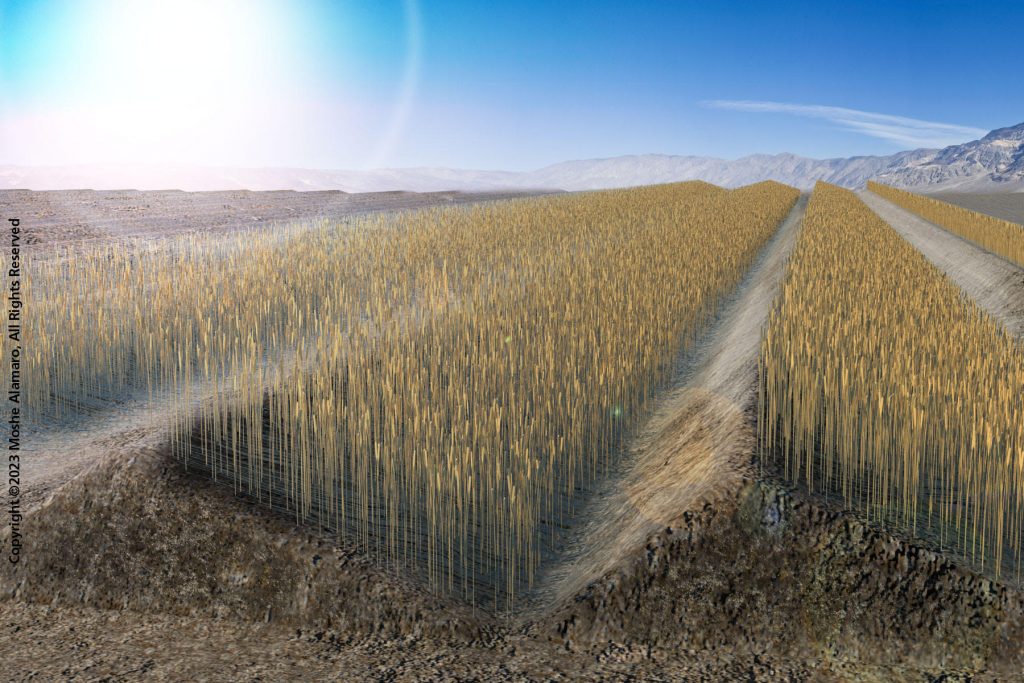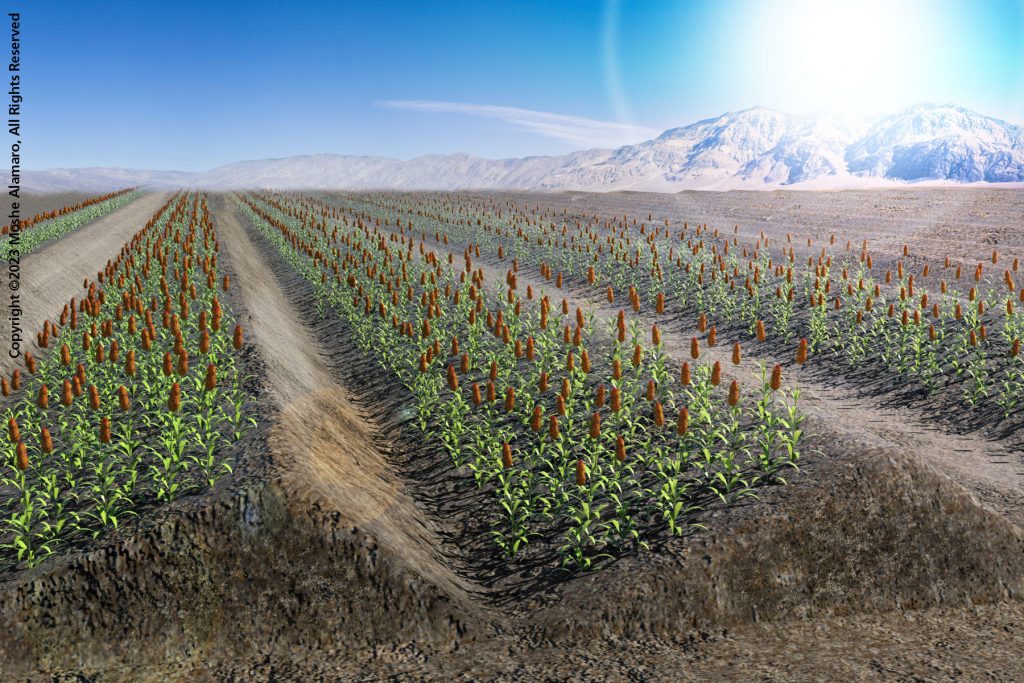RESLOPE GLOBAL
The Green Revolution
For The Semi-Arid World
North-South Slopes Cultivation
What is North-South Slopes Cultivation?
15% of the world's surface is semi-arid where 1.1 billion people live, the most vulnerable people on earth.
Hundreds of thousands of square miles can be potentially upgraded into cultivable land.
Our plan is to imitate vegetation patterns by the construction of man-made slopes.ReSlope Global
RESLOPE GLOBAL
The Green Revolution for the Semi-Arid World
Feeding The World
The North-Facing Slope Effect
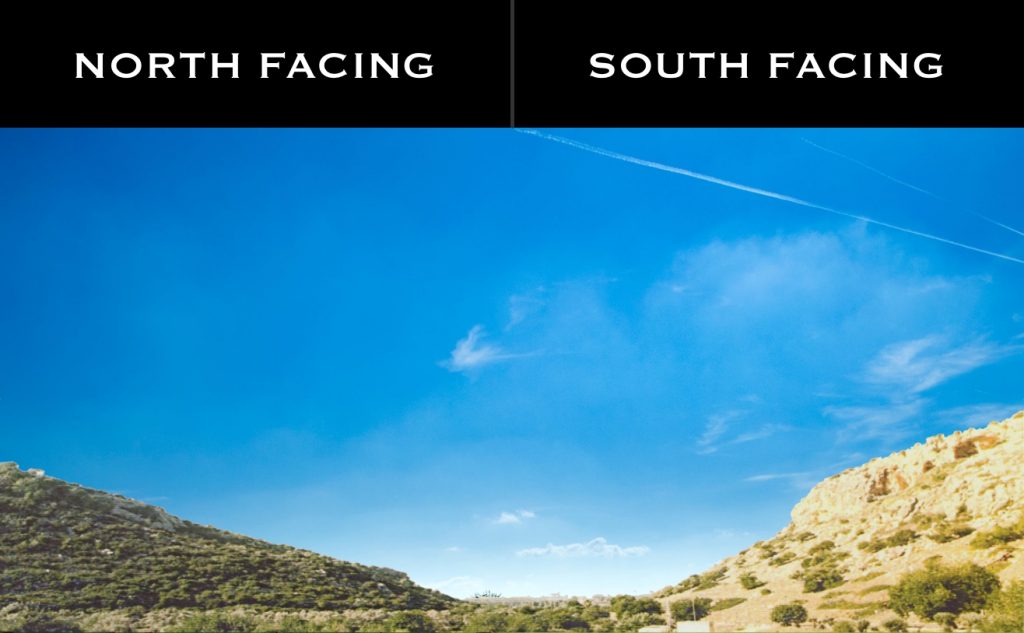
Typical natural North-South slopes in a semi-arid area. The North-facing slope is lush, moist and green; the South-facing slope is dry and unusable.
The North-facing slope is partially shaded. Evaporation is reduced, enabling vegetation growth. The South-facing slope and the flat terrain in between are both bone dry.
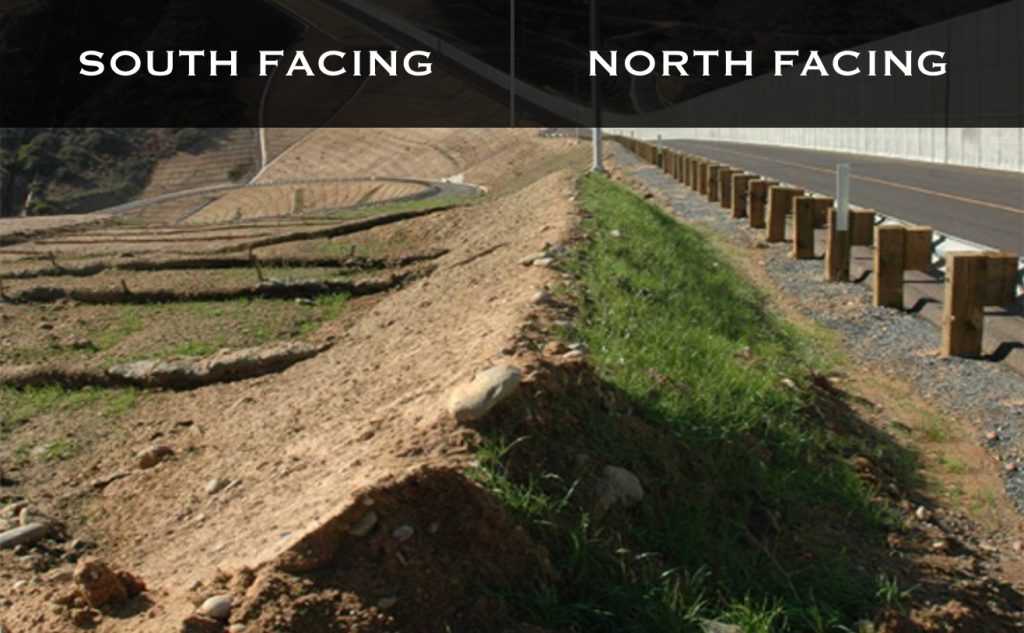
Public Work in San Angelo, Texas. Grass appears spontaneously on the North-facing slope two weeks after digging.
Evaporation and transpiration (evapotranspiration) are reduced on the partially shaded North-facing slope allowing for vegetation growth.
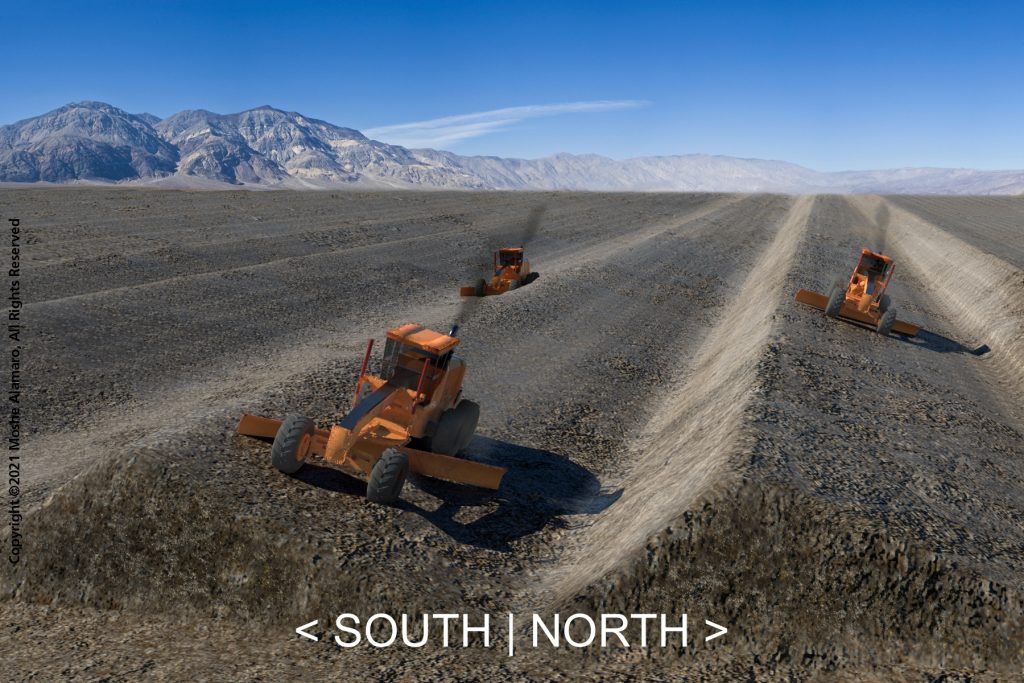
Earthmoving and construction of north-south slopes on semi-arid land for arable land formation imitating north south on natural hills.
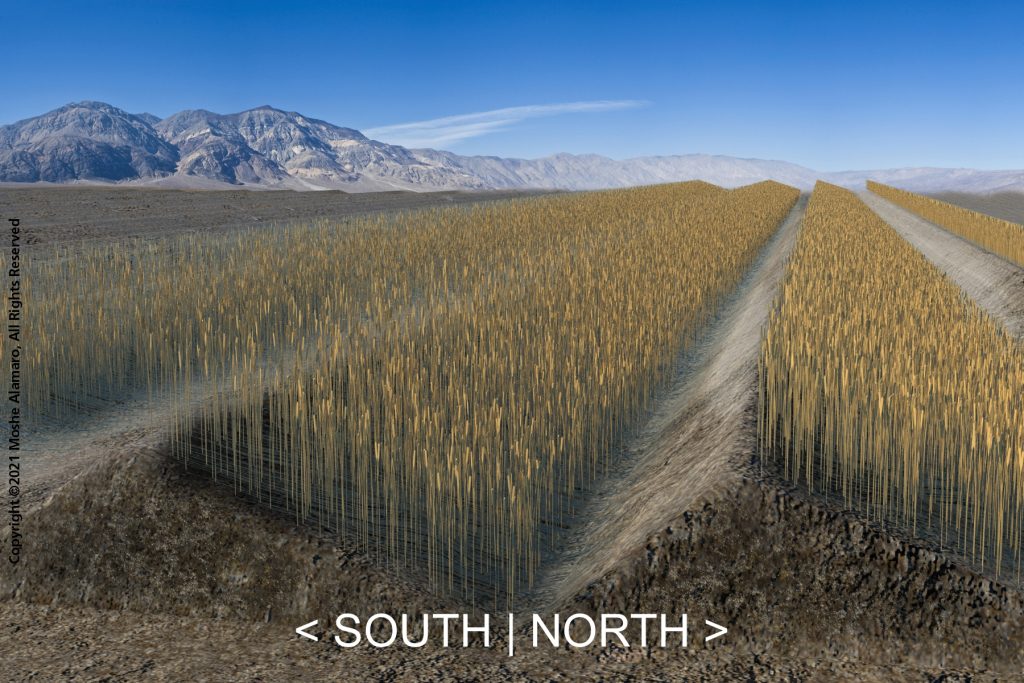
Cultivation on the man-made northern slope. Our plan is to imitate vegetation patterns by the construction of man-made slopes.
Does North-South Slopes Cultivation Really Work?
Consider the following example:
The annual precipitation in London, UK is 24 inches, while the annual precipitation in Dallas, TX is 35 inches.
And yet London (51 Deg latitude) is green and lush while Dallas at latitude 31.5 Deg is semi-arid.
A small difference in latitude and solar irradiation flux can cause a dramatic difference in vegetation and bio mass productivity.
Applications of North-South Slopes in Africa
RESLOPE GLOBAL
The Green Revolution
ReSlope Global (RSG) was founded by Moshe Alamaro, an MIT atmospheric scientist and aero/mechanical engineer. ReSlope Global seeks to transform semiarid terrain worldwide into arable, cultivable land. Our goal is to alleviate hunger and poverty by increasing food production worldwide.
ReSlope Global addresses the looming world food crisis due to climate change and political instabilities such as the one caused by the Russia-Ukraine war.
The concept is based on observations of semiarid natural hilly terrains. When you travel in the U.S. Southwest, Southern Europe, North Africa, or the Middle East, you will see different patterns of vegetation on a hill with a slope to the north and a slope to the south. The northern slope is usually green and lush since it is naturally partially shaded, and thus evaporation from the soil and transpiration from the plants (the combined term is evapotranspiration) are reduced. Therefore, rainfall is retained, allowing the growth of vegetation.
ReSlope’s agenda is to change the terrain of semiarid non-productive dry land by earthmoving. The creation of north-south slopes will enable cultivation of the northern slope, imitating vegetation patterns on natural hills.
The agenda involves an international collaboration with scientists from Italy, Kenya, Tanzania, Botswana, Nigeria, India, Brazil and the United States. All are interested in implementing the new method in their respective countries. Scientists and engineers from Denmark and the Netherlands are providing expertise on earthmoving and agricultural economics.
ReSlope and its international collaborators are raising funds for research and development and for the development of testing pilots to address applications in different regions. We expect to obtain follow-up funding from each respective government and subsequently large-scale funding from world organizations for worldwide implementation. The pilots will be developed initially in the Sub-Sahara regions.
The agenda requires research and development (R&D, with emphasis on the D) on issues such as climate patterns, soil and geochemistry, agronomics, earthmoving, and ecological impacts, to name a few. ReSlope is developing a “division of labor” so each research group will concentrate on areas of its competence.
Today, 15% of the earth’s land surface area is semiarid (more than twice the United States’ area). The ReSlope agenda has the potential to provide new arable land for food production, new jobs, and economic development, and to alleviate the world’s looming food security crisis.

